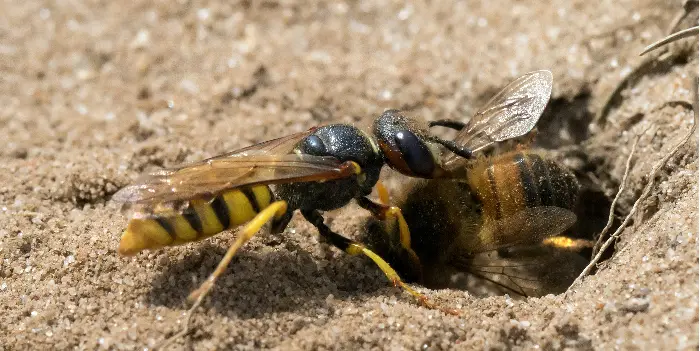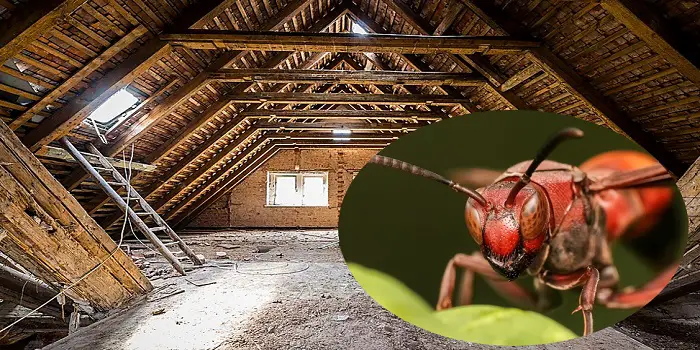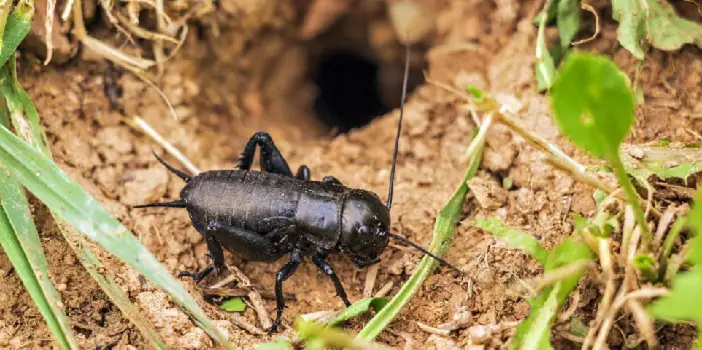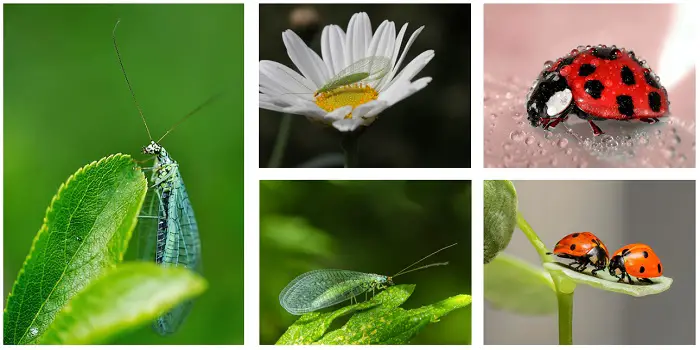
Most gardeners know about the insects that cause damage and consume the plants or flowers in their respective gardens.
Instead of using chemical deterrents or insecticides that may do more harm than good, Mother Nature provides a natural solution in the form of beneficial bugs that eat the pests.
Ladybugs and lacewings are two of the most commonly sought-after beneficial bugs that can protect your garden from unwanted insects.
They are the predators that protect your plants while consuming the bugs that eat them. You can even call them a safe alternative to pesticides.
But what are ladybugs and lacewings, and how do you attract them to your garden for good reasons?
Let’s try to get the answers to these questions and more in the article below…
What are Ladybugs?
Ladybugs (also called lady beetles or ladybird beetles) are beetles and not bugs.
There are about 5,000 species, and over 450 are native to North America.
These tiny winged insects can be one millimeter to 10 millimeters long, and they come in a variety of colors.
The environment-friendly ladybug is arguably the best-known of the beneficial insects – thanks to its reputation for killing unwanted pests and its beautiful appearance.
Appearance
Ladybugs are most noted for their bright red coloring, complete with black dots on their wings.
They also have a rounded, turtle-like shape that distinguishes them from other insects.
Although they have two sets of wings, only one pair is used for flying; the other is generally very strong and is used for protection.
While they do fly, they are more often seen on the ground and especially on flowers that produce pollen that they enjoy consuming.
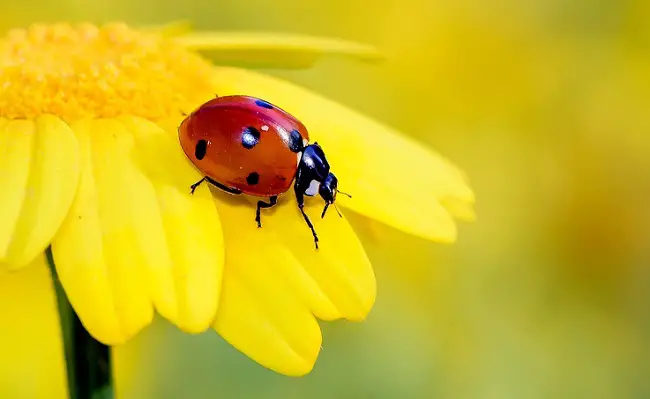
Food They Eat
Ladybugs primarily consume pollen and destructive insects such as aphids, scale, and mites that otherwise would cause considerable damage to your garden.
And while you may see a ladybug on a flower, it only consumes the pollen it produces, leaving the flowers themselves untouched.
Some of the flowers that can attract ladybugs include the following.
- Angelica, Calendula, and Caraway
- Chives, Cilantro, and Cosmos
- Dill, Fennel, and Feverfew
- Marigold, Statice, Sweet Alyssum, and Yarrow
However, ladybugs are also attracted to a garden by the plants that their prey consumes.
This means that if your garden has early cabbage, marigold, nasturtium, or radishes, then these colorful insects will show up waiting for their prey.
Are They Dangerous?
Ladybugs are not poisonous but can bite or pinch humans, which may cause mild pain with harmless bumps and redness of the skin.
People who are allergic to protein can develop allergic skin reactions because it’s naturally present in the ladybug’s body.
Ladybugs can be harmful if they are in large numbers in your home.
Ladybugs can even be dangerous to your pets if they eat them.
What are Green Lacewings?
While ladybugs are more popular, green lacewings may be more effective in eliminating a wide variety of unwanted insects.
Despite their dedication to clearing away pests, they have mostly gone unnoticed by many gardeners, probably because their appearance is not nearly as beautiful or distinctive as the ladybug.
Appearance
The green lacewing is, as the name describes, green in coloring.
They look like elongated flies with large, delicate wings.
The eyes of a lacewing are copper in color, and they have long antennae which help them seek out prey.
The larvae of the lacewings tend to be flat in appearance with an alligator-like look.
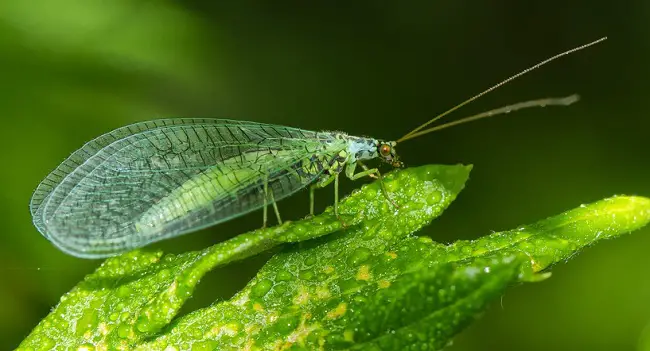
Food They Eat
The green lacewings are hungry predators and will go after various insects, including the following.
- Aphids, Caterpillars, and Leafhoppers
- Mealybugs, Mites, and Psyllids
- Thrips and Whiteflies
The green lacewing is a hungry critter, consuming upwards of 200 insects each week.
In addition, the lacewing will also consume nectar, pollen, and honeydew, along with the eggs of other insects.
Are They Dangerous?
Although not harmful to plants when present in low numbers, if there are many of them, they can be dangerous for your garden.
Usually, they do not bite humans or pets.
But you can be occasionally bitten by larvae or adult lacewings when working in your garden.
The bite may be like a slight prick, which is often followed by a red, itchy bump much like a mosquito bite.
How to Attract Lacewings and Ladybugs to Your Garden?
By eating unwanted pests that attack your plants, both the ladybug and lacewing are invaluable in protecting your garden or flowerbed.
This will allow your plants to grow stronger and healthier, thanks to the presence of these beneficial bugs.
What follows is how to attract or keep ladybugs and lacewings in your garden or flowerbed.
1- Decoy Plants
It probably sounds counterintuitive to bring in plants that attract unwanted insects.
However, that is one of the best ways to ensure you have plenty of ladybugs and lacewings.
Set up the decoy plants on the exterior of your garden. If you can, put some distance between them and your other plants.
You can also put one or two of these plants inside the garden to provide the ladybugs and lacewings a home, so they can then patrol the garden area.
2- Buy Ladybugs
So popular are ladybugs that you can often find them easily for sale at retail stores that carry a wide variety of plants.
The trick is knowing when to release the ladybugs, so they do not fly off and find a home elsewhere.
- Make sure your garden has the food, water, and shelter they need
- Put the ladybugs in the refrigerator for six to eight hours
- Then, release them at dusk. Being cold will slow them down, so they will look closely for a home
- If you have aphid-infested plants, that’s a good place to put ladybugs
- Make sure the leaves have water droplets on them for the ladybugs to consume
3- Stop Pesticides
Unlike ladybugs, lacewings may not be available at your local retail store that specializes in plants.
So, you may have to try to attract them to the wild.
The first step is to stop using pesticides as that will kill them.
Instead, use products such as Bacillus thuringiensis that will kill maggots and caterpillars but leave lacewings untouched.
4- Provide Good Shelter
Lacewings often use leafy plants to shelter their eggs.
The eggs will appear long and stringy when under a leaf, so do not touch them.
It will not take long for a lacewing to mature once it is hatched, so be prepared to see plenty of them for a short while.
Because they fly around frequently, the green lacewing can be mistaken for a bug hungry for the plants.
Make sure you do not try to swat or shoo them away.
Instead, understand what they look like and leave them alone.
They will take care of themselves without harming the plants.

Other Related Questions:
Are all ladybugs beneficial?
Although ladybugs are among the gardener’s favorite insects, not all of them are so great.
In fact, there are a few that can prove to be destructive to plant life and the ecosystem.
One particular type/species is the multicolored Asian lady beetle (MALB) which can be very aggressive and can bite.
Is it safe to buy ladybugs for the garden?
While there are criticizers, ladybugs are many times bought and used as a biological pest management solution where people do not want to use toxic insecticides.
If you plan to buy them to safeguard your plants from a bug infestation, there are a few things you should know…
- Ladybugs in stores are usually kept refrigerated and can fly when left outside.
- Ladybugs that are bought from stores are usually wild and work best in greenhouses where they are not allowed to fly away.
- Only buy the beetles that are native to your area and also pick the ones that are preconditioned (have been already fed before shipping)
After you bought them, release these eco-friendly beetles only at a place where there are enough sap-sucking insects like aphids for them to feed.
If not, they may damage other crops or can fly away somewhere else in search of food.
What to do if ladybugs venture into the home?
Ladybugs usually search for a warm place to overwinter during the fall when the weather starts getting cooler.
This is the time they can move away from fields and orchards to settle under rocks, leaves, or old fallen wood trees to spend the winter.
Many of them can also enter your home or other buildings in large numbers if they do not find a suitable location outside.
A good way to get rid of ladybugs from your home is by vacuuming and discarding them into a closed bag outside.
Its recommended not to kill them as they are beneficial.
The Conclusion
Remember that ladybugs and lacewings will not kill all the pests affecting your garden.
If they do, then they will go somewhere else to find food.
So, you will have to live with a little damage to your plants.
If they do manage to destroy all the pests and leave, you will need to buy more ladybugs when you start seeing new damage to your plants.
Remember not to use insecticides as that will also kill the ladybugs and lacewings.
Instead, you can use the plants to help bring in these predator bugs to help rid your garden of unwanted pests.
Share the post "Are Lacewings and Ladybugs Beneficial for Your Garden?"

Welcome to ProShieldPest.com. I am Tina Jones. I have been working as a pest removal professional in Winslow, Arizona lately. At present, I love to spend my time with my family as a retiree.
Here I share all my knowledge and experiences to help people understand better how they can stop pests at their homes without actually killing them. Hopefully, the information you will find here will help in safeguarding your home! You can check more about me here.


